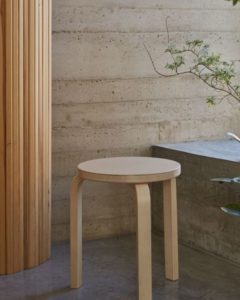Everyone Cares About Design
Everyone cares about design, believe it or not
When bringing up the term “designer” we think of luxury brands with outrageous price tags, or we think of gaudy logos covering clothing that make them statement pieces. We can also bring up people paying hundreds of dollars for a plain tshirt just because it has a specific name on it.
High design was not meant to be exclusive. The purpose and drive of many modern designers was to create designs that were accessible to the average consumer– which is why many architects didn’t limit their designs to only buildings, but branched out into furniture, glasswork, ceramics, textiles, etc. It would be expensive to have an architect design your home and furniture, but purchasing elements was within reach to bring good design into your home. Contemporarily, design comes with a hefty price tag. Well designed homes, furniture, and glasses that are affordable are much more difficult to come by– even designs created in the mid century specifically to be within reach are now unaffordable to the average person. Take the iconic Eames lounge chair, originally sold as a chair and ottoman set for $310 USD in 1956, to the current cost of the chair and ottoman being anywhere from $4,500-$8,000 USD depending on the dealer. Alvar Aalto’s Stool 60 design, perhaps just as iconic as the Eames Lounge Chair, was originally designed and produced in the 1930s and immediately became available en masse to the public. A professor once told me he went to Finland in the 80s and ordered many of these stools for $25 USD each, but now the price of the original stool is close to $400 USD.
In short, good design has become inaccessible to the general public because of the cost. As much as someone says that they don’t care about design, it’s not actually true. Everyone cares about design because design is for everyone. When shopping, and picking out furnishings for a home the concept of design may not be at the forefront. But the size, comfort, and overall aesthetic of a couch is designed, even if you’re purchasing at a thrift store or estate sale. Even choosing something purely for utility purposes, there is still a design decision behind choosing for utility. When designing homes some people will say they don’t care about the finishes or certain aesthetic choices, but if the designer was to suggest something outside of the client’s usual taste (perhaps pink vinyl siding, or electric orange kitchen tile) there is immediate backlash. Neutrality is still design. It’s important to understand that everyone cares about design, so design should be for everyone. Perhaps it’s time to start encouraging designers again to be designing for the average consumer and to produce designs within reach.
By, Kay Kriegel intern extraordinaire @ Assembly.



